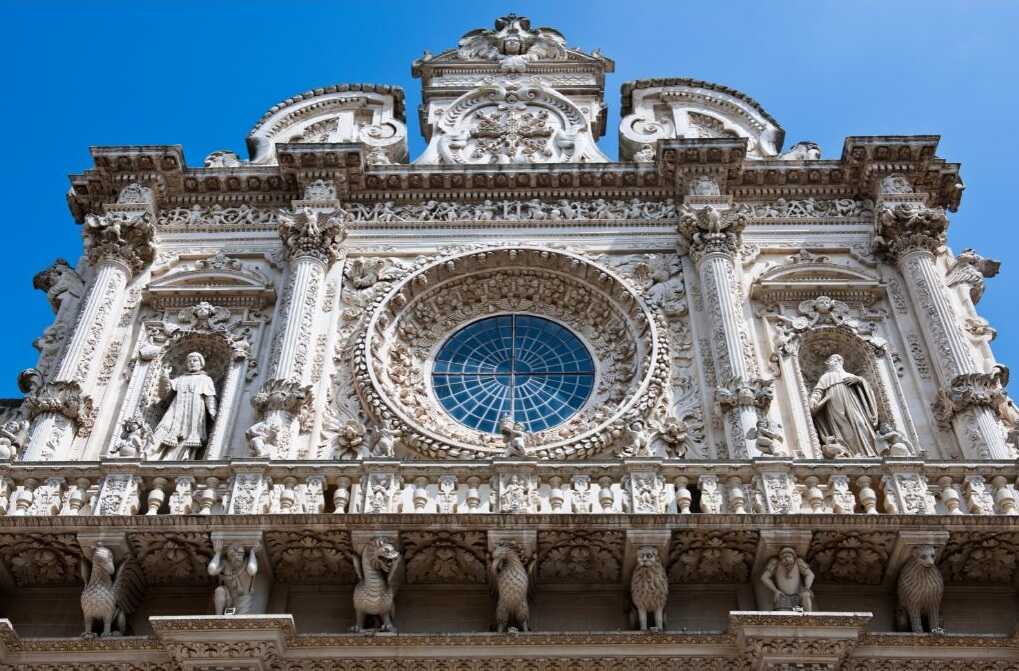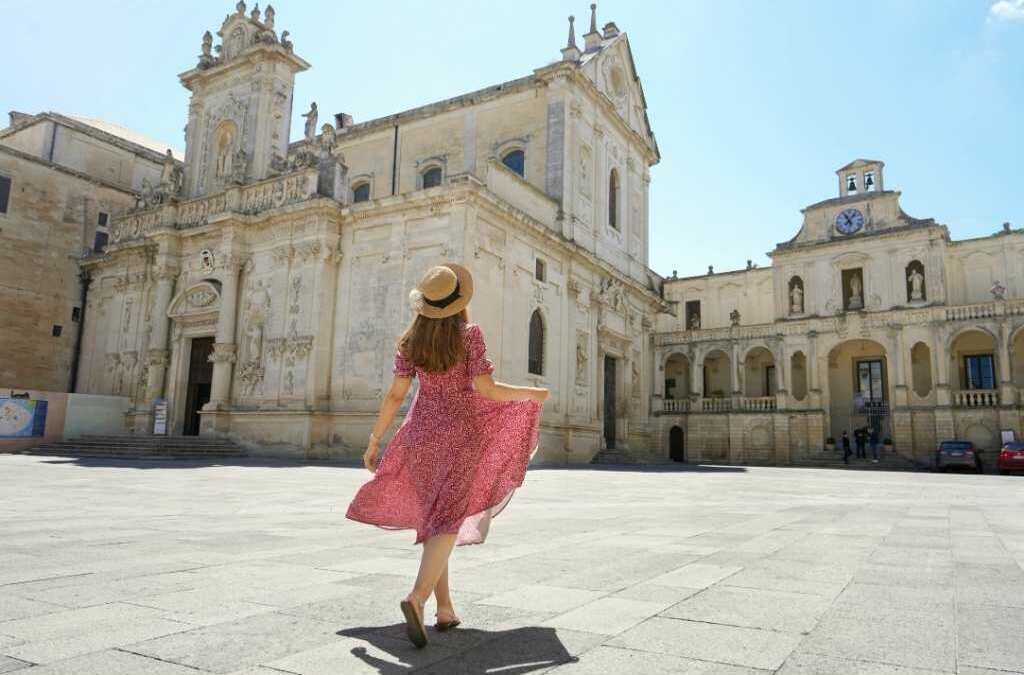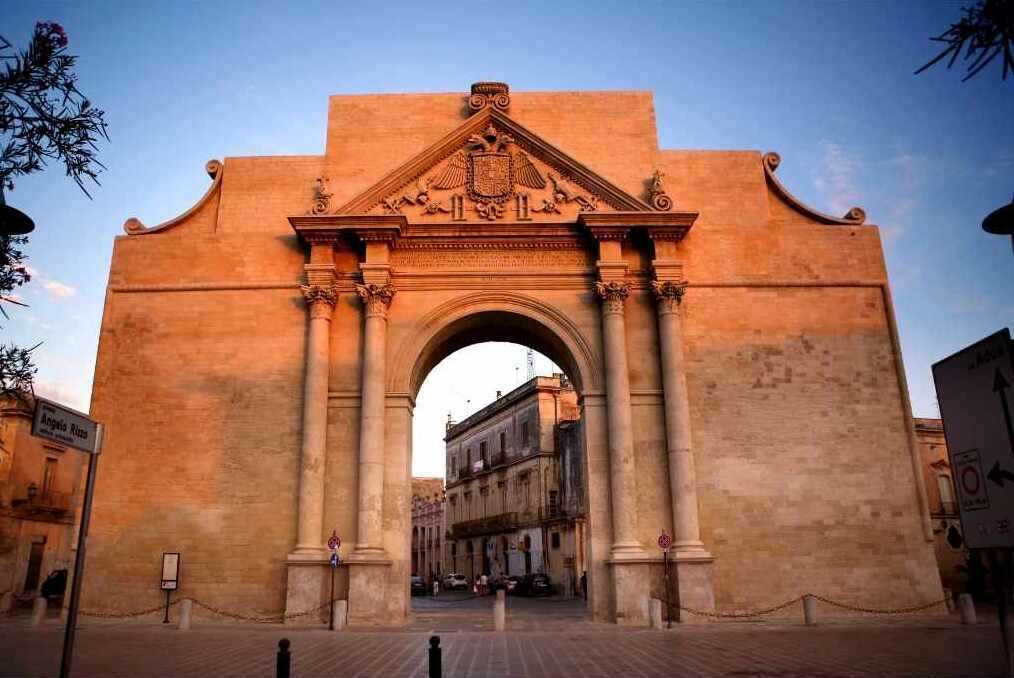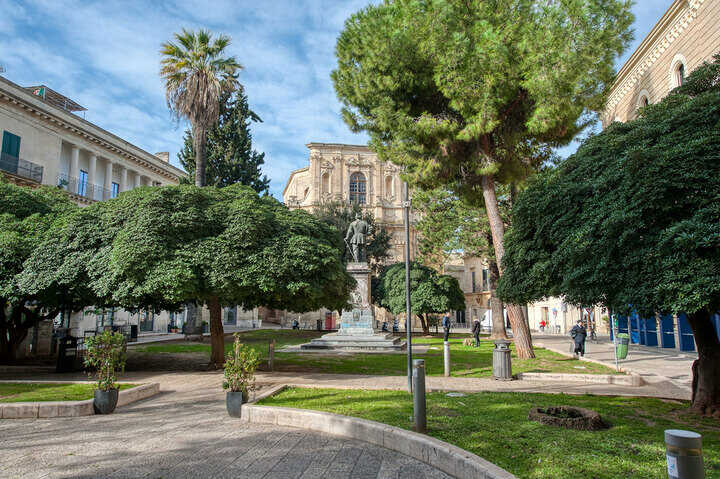Ex Convitto Palmieri – Lecce
The ex Convitto Palmieri is one of the most significant historical sites in Lecce, a city that boasts an extraordinary cultural and architectural heritage. Located in the heart of the historic center, this building represents one of the most fascinating testimonies of the history of the city and its evolution over time. In this article we will discover together the elements that distinguish this important place of culture, providing you with the necessary elements for your visit to the city.

The history of the ex Convitto Palmieri
- The Convitto Palmieri has a history that dates back to the 17th century. Founded thanks to the generosity of Don Giovanni Palmieri, a nobleman and philanthropist from Lecce, the boarding school was born as an educational institution with the aim of welcoming deserving and needy young students. Palmieri, driven by a strong sense of social responsibility, decided to allocate a large part of his fortune to the creation of a school that could give access to education to those who could not afford it. This altruistic gesture contributed to improving education and culture in a city that, at the time, was in full development.
- In 1807, following the first suppression of religious orders by order of King Joseph Bonaparte (Napoleon’s brother), the convent was used for civilian purposes (barracks, depot and cavalry hospital), and then in 1816 it became the seat of the “Collegio-Convitto di S. Giuseppe”, the only high school in the Province of Terra d’Otranto, whose management was entrusted to the Jesuit Fathers from 1832. The arrival of the Jesuits marked the transformation of the religious complex into a prestigious educational structure, which was the fulcrum of education for generations of young people from Lecce.
- Shortly after, with the fall of the Bourbon Monarchy, the Jesuits were expelled in 1860 and the Real Collegio San Giuseppe became the “Liceo Ginnasiale e Convitto Nazionale”, which was given the name of the illustrious economist and enlightened Salento scholar of the 1700s, Giuseppe Palmieri.
- During the First World War, the school premises were used as a military hospital and the church remained closed to worship.
- In 1960, the “Liceo Ginnasiale Giuseppe Palmieri” was definitively transferred to its current location, in Viale dell’Università, while the “Convitto Nazionale Palmieri” retained its location, remaining in Piazzetta Giosuè Carducci and continuing to educate and host boarders (i.e. students who, in addition to studying, also stayed to sleep) and semi-boarders (who, instead, only studied).
- The “Convitto” operated until 2000 when, due to a lack of boarders (students who stayed to sleep), it was definitively closed, falling into a state of abandonment.
- Its spaces were reopened to the public in 2009, starting from the moment in which the Convitto Palmieri hosted the Provincial Library “Nicola Bernardini” which includes the reading room, the multimedia room, the small theater, the many exhibition spaces and the offices intended for the reception and consultation of the archives.
- Today, the monumental complex, owned by the Province of Lecce, after important restoration works has become one of the most important cultural spaces of the city, managed by the Polo Biblio-Museale of Lecce.
The educational function of the ex Convitto Palmieri

Today the Convitto Palmieri is still active as an educational institution, albeit with a slightly different mission than in the past. Originally conceived as a school for less well-off young people, the boarding school has expanded its educational offering over the centuries, evolving into a high school with high-level preparation. The facility hosts students from different parts of Italy and also from abroad, attracted by the quality of the education provided there.
In addition to its educational function, the Convitto Palmieri is also an important cultural center. It organizes events, conferences, exhibitions and other initiatives that involve not only students, but also citizens. Thanks to these activities, the Convitto continues to play a leading role in the cultural life of Lecce, promoting the spread of culture and integration between different generations.
What to see inside

- The ancient provincial library “Nicola Bernardini“, built in 1873, was reopened in 2009 after restoration. In addition to housing a vast book collection and a historic Salento newspaper library with over 100 local newspapers no longer active, the library is intended as a place for cultural exchange and dialogue. Many citizens frequent the public spaces of the cloister, furnished with comfortable colored seats, where it is possible to read, study and meet.
- The boarding school houses the “Fabbrica delle Parole”, a permanent printing museum, which exhibits ancient printing machines, the first computers and other tools that have represented the evolution of typography.
- Don’t miss the “Carmelo Bene Archive” which collects the book collection, the personal collection and heterogeneous materials, such as costumes, stage elements and personal furnishings of the Salento artist.
In the center of the square, first called “piazzetta degli Studi” and since 1904 named after Giosuè Carducci, was placed the marble bust of the poet, created by the Lecce sculptor Luigi Guacci.
Curiosity
Piazzetta Giosuè Carducci was chosen by the Turkish director Ferzan Özpetek as the setting for some scenes of two of his films shot in Lecce: “Mine vaganti“ from 2010 and “Allacciate le misura” from 2014, so much so that it was renamed by some, “Piazzetta Özpetek”.

Basilica of Santa Croce in Lecce
If you are planning a visit to Lecce, one of the unmissable stops is undoubtedly the Basilica of Santa Croce, the first Baroque masterpiece of the city. The Basilica is located in via Umberto I, right in the historic center and next to another important structure: the former Celestine convent or Palazzo dei Celestini. Some […]

Duomo of Lecce
Located in the historic center of Lecce, the Cathedral stands in one of the most evocative squares in Italy: Piazza del Duomo. This square, which surrounds the cathedral, is one of the most iconic places in Lecce, the hub of the city’s religious life. Here you can breathe in the quiet and fascinating atmosphere of […]

Must see in Lecce
Lecce, a charming corner of Puglia, is a city that enchants visitors with its thousand-year history, lively traditions and its unmistakable architectural style: the Lecce Baroque. Often called the “Florence of the South”, Lecce is a true open-air museum that deserves to be discovered in all its nuances. If you are planning an itinerary in […]

Porta Napoli in Lecce
Lecce, a city rich in history and culture, is famous for its artistic heritage, especially thanks to the magnificent Baroque style that characterizes it. Among the many monuments that embellish this city, Porta Napoli is usually the “first” that is visited by those who go to the city. The “first” because it is located right […]

Piazzetta Santa Chiara – Lecce
In the heart of Lecce, one of the most fascinating cities in Puglia, there is a corner that embodies all the magic and history of Lecce’s Baroque style: Piazzetta Santa Chiara. This small and evocative urban space is not just a point of passage, but a real meeting and entertainment place, a privileged location for […]

Museums of Lecce
Lecce, the capital of the province of the same name, is one of the most fascinating cities in Puglia, known for its extraordinary baroque beauty. In addition to the architectural wonders that adorn its squares and streets, Lecce hosts a vast array of museums that tell the story of the city and the region. Lecce’s […]


